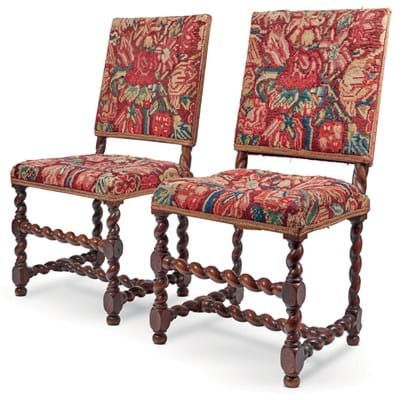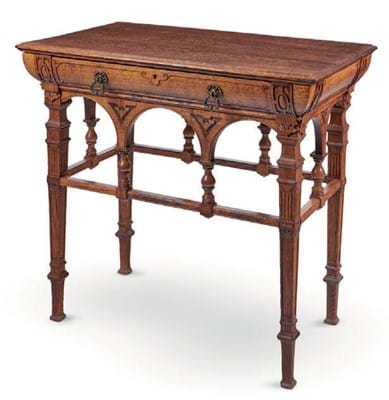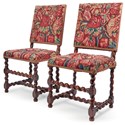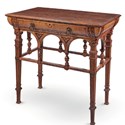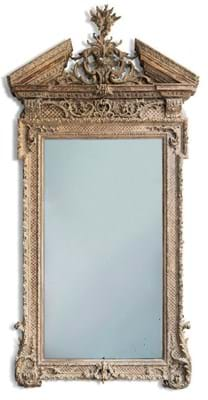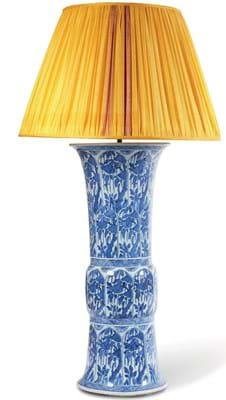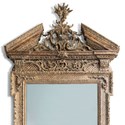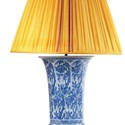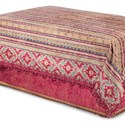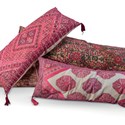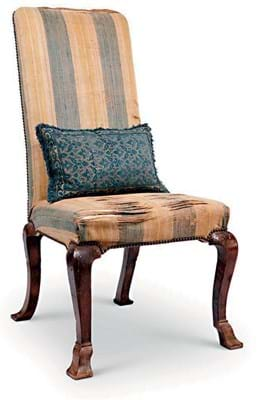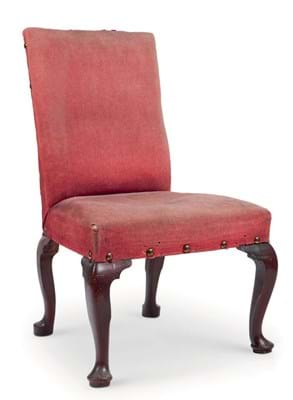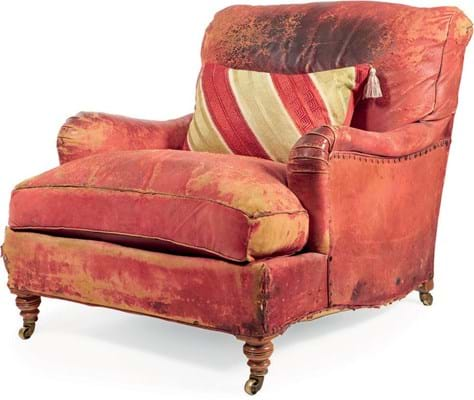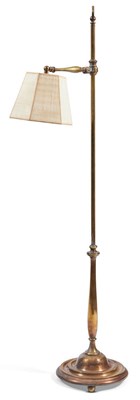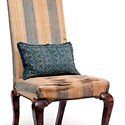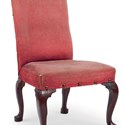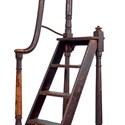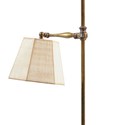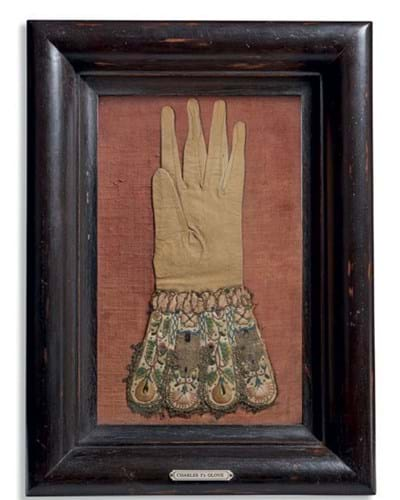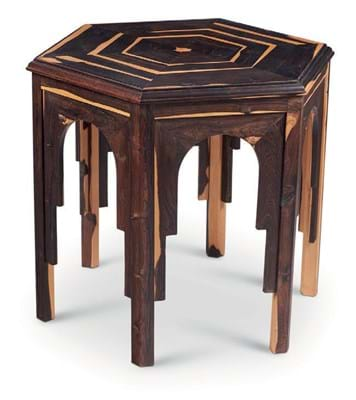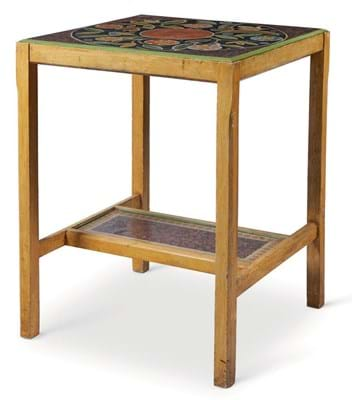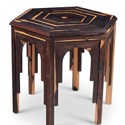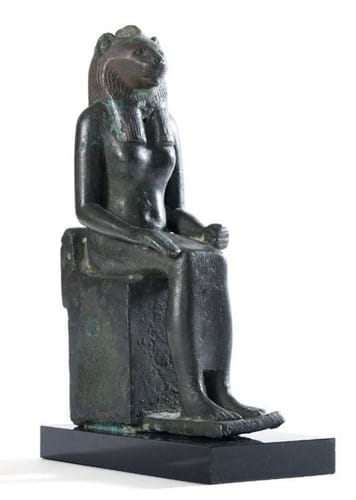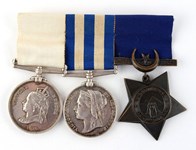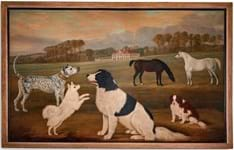If the success of Robert Kime: The Personal Collection at Dreweatts (26/25/20/12.5 buyer’s premium) was, perhaps, a forgone conclusion then the sale’s extraordinary results showed the respect and affection held for the late antiques dealer and designer.
In a significant coup for the Newbury auction house, Kime’s private collection, sold over three days from October 4-6, achieved a premium-inclusive total of £9.6m against a pre-sale estimate of £1.5m: a ‘white-glove’ auction with over 900 lots finding buyers.
Dreweatts’ previous successes include Chilham Castle: The Selected Contents from a Christopher Gibbs Interior and The Collection formerly from Flaxley Abbey: An Oliver Messel Commission, both sold by Dreweatts last year.
The Kime auction was promoted by a sumptuous two-volume printed catalogue accompanied by an additional boxed set (limited to 250 copies), talks at the V&A, virtual tours of the saleroom and Kime’s homes in London and Provence, and a slick private view attended by luminaries of the design, antiques and art worlds.
Deals to design
Kime’s place as one of the ‘greats’ of British design – alongside John Fowler and David Hicks – is assured. He began his career as an antiques dealer before moving sideways into design – a natural progression for a dealer with a discerning eye.
“I like to arrange things”, he said, creating sophisticated, understated interiors with a “sense of safety and a feeling of permanence”.
This was a relaxed, if slightly Bohemian, look shared by a school of dealers and designers with a similar old-school aesthetic: Geoffrey Bennison, David Mlinaric, Christopher Gibbs and Piers von Westenholz.
“It’s madly clever, nothing matches”, said Nancy Reagan on her first view of Andrew Lloyd Webber’s New York apartment decorated by Kime. At the same time, his subtle re-decoration of Highgrove and Clarence House brought a royal warrant and an introduction to a wider audience.
Kime was a prolific buyer of remarkable objects: a dealer and collector who loved the process of buying and selling at auction.
“We created a sale that Robert would have liked to have bought at himself”, said Joe Robinson, Dreweatts head of house sales and private collections.
Day One (Lots 1-399) included items from Kime’s flat in Warwick Square, Day Two (Lots 400-746) those from La Gonette, Kime’s house near Aix-en-Provence (restored by Kime from a burnt-out shell) and Day Three (Lots 747-918) a final selection of objects with reasonable estimates of interest to younger collectors, or those new to the market.
Love of history

Kime’s love of history, provenance and association is revealed by this 17th century Sherwood Forester’s tunic, formerly the property of antiques dealers Roger Warner and Christopher Gibbs, £6500 at Dreweatts.
The 17th-century Sherwood Forester’s embroidered velvet tunic sold for £6500 spoke for Kime’s deep love of history, provenance and association.
Described by Dreweatts as “the perfect Robert Kime object: a complex mix of rich, yet disarmingly simple, textiles from one of Britain’s celebrated ancient families”, the tunic remained in the possession of the Savile family until 1938, passing to Roger Warner, the Burford dealer; subsequently resurfacing for sale at the Christie’s Christopher Gibbs auction (The Manor House at Clifton Hampden, Oxfordshire), where Kime acquired it in 2000.
Similarly, the 18th century Faringdon mirror that took £55,000, from the collection of the eccentric avant-garde composer Lord Berners, came to Kime via Jamb, the Pimlico Road dealers.
Likewise, a framed silk glove (£17,000) is said to have been given to a lady-in-waiting by Charles I.
Yet, ironically – in a revealing demonstration of the power of provenance – Robert Kime’s own distressed Howard armchair fetched a staggering £45,000 against an estimate of £3000-5000.
The craze for all things Bloomsbury marches on, and Duncan Grant’s painted table, a simple piece decorated by Grant with ‘stylised flowerheads and leaves’ (in the manner of Charleston, but probably executed in the 1940s or 50s), achieved a remarkable £65,000.
A significant number of lots demonstrated Kime’s regard for the Arts & Crafts movement, mirrored by his preference for bold architectural design and the masculine lines of William IV and the Gothic Revival: a striking pair of William IV library steps on spoked brass casters sold for £12,000, a late Victorian oak centre table by Gillows ‘in the Jacobethan style’ realised £12,000, and a Victorian octagonal library table went for £5000.
Exotic extras
Kime’s sophisticated reinterpretation of the country house style extended to a very English love of the exotic (in the tradition of The Grand Tour) with the carpets, fabrics and textiles of Turkey, Central Asia and the Near East key to a Kime interior.
Typical Kime pieces included a signature Kime Ottoman (£13,000) covered in red damask and a loose ikat ‘probably Qajar, second half of the 19th century’, a ‘group of four Uzbekistan cushions’ that sold for £3800 including three Swat embroidered cushions, sewn by the ‘women of Pakistan as part of their wedding dowry’ and a pair of William and Mary side chairs (£24,000) upholstered with late 17th-century Turkey-work (imitating the appearance of Turkish carpets, yet made in Yorkshire).
Also trademark Kime was his use of Islamic-inspired side tables and converted Chinese vase lamps: such as an architectural (if not especially old) calamander occasional table (£3500) and a Kangxi blue and white vase lamp (£15,000), topped with a gathered silk shade in yellow and crimson.
At the same time, the sizeable collection of antiquities stretching to around 75 lots revealed Kime’s love of the ancient world and attracted the academic collector as much as the rich, if casual, buyer.
A large Egyptian bronze figure of a lioness-headed goddess ‘probably Wadjet, late period Ptolemaic, c.664-30BC’, acquired by Kime from Sotheby’s New York in 2004 (The Charles Pankow Collection of Egyptian Antiquities) sold for £28,000 (estimate £10,000-15,000).
Likewise, an impressive pair of prehistoric Giant Irish Elk antlers revealed Kime’s appreciation for natural history, securing an equally impressive £75,000 on the day.
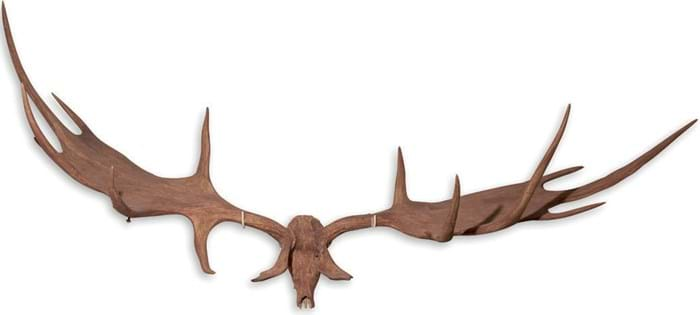
Pair of prehistoric Irish elk antlers, in part Pleistocene period, from La Gonette, Kime’s house near Aix-en- Provence, £75,000 at Dreweatts.
Successful auctions require a healthy mix of buyers to create atmosphere and momentum.
Robert Kime: The Private Collection had this in spades – attracting key collectors, personal art advisers, interior designers, aesthetes and dealers, many of the latter buying for their own private collections.
A report on the fine art sold in the Kime auction appears in this issue.

